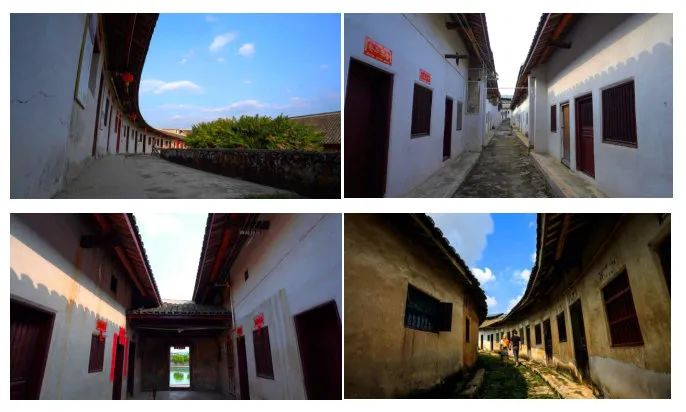

Beijing quadrangles, Shaanxi caves, Guangxi “pole and fence style” Yunnan “one seal” dragon houses are in Meizhou, in Meizhou City, Guangdong Province.
The ancestral hall and residence are integrated, covering an area of more than 23000 square meters and nearly 500 houses and halls, which is extremely rare in residential buildings.
Renhou Wengong temple, located in Qunfeng village, Bingcun Town, Meixian District, is particularly representative.
Liu Bowen and Renhou wengongci about Renhou wengongci, there is a folk rumor, which is included in the complete book of Guangdong Folk Tales (compiled by Guangdong Federation of literary and art circles and Guangdong Association of Folk Writers and artists).
News, everyone is looking at an “immoral” fishing port…
Renhou wengongci is the only Hakka Wai long house in Meizhou that has been included in the masterpiece “Chinese traditional residential architecture” compiled by the Chinese Architectural Society.
There are more than 20000 Hakka dragon houses.
It was founded in the third year of Hongzhi of the Ming Dynasty (1490 A.D.) and has a history of more than 500 years.
It is really like the meticulous bricks laid under the foetus and the ancient cycads over 400 years old.


In summer, heavy rain drains smoothly; In winter, the cold is separated from the surrounding dragon.
She is the cornerstone of the social structure, but her status is extremely noble and of great significance.
And the folk house, as a residential building bearing this special significance, can also be called the cornerstone of home.
It is said that Liu Bowen, the founding father of the Ming Dynasty, and Renhou wengongci are related.
The noon sun under each patio seems to be different.
After living in seclusion for several years, he recovered.
Hakka residents’ buildings have different changes in different historical periods and regions, including dragon houses, enclosure houses, quadrangle towers, Hakka townhouses But the most representative one is the Wai long house.

It is said that in the early Ming Dynasty, Liu Bowen went south to avoid disaster and was taken in by Lord Wen.
The ancient cycad architecture of more than 400 years old is of great significance because of people, either exquisite and flexible, or magnificent and great.
The warm fireworks in each stove wind around each other.
Since the founding of the foundation, this Wai long house has protected and bred more than 400 households and more than 1000 people in 19 generations of the Wen clan.
It is the epitome of Weilongwu building group, and has high artistic and cultural value for the study of residential buildings and the exploration of Hakka culture.
Later, these three places all developed and multiplied, and the third treasure place is now Renhou Wengong temple.
For them, the cornerstone of family residence is particularly important.
Today, after 500 years of vicissitudes, Renhou wengongci still stands leisurely among the green waters and mountains.
Before leaving, in order to express his gratitude to Lord Wen, Liu Bowen pointed out three geomantic treasure lands and asked him to create a foundation on these three treasure lands, which could keep the family name and descendants prosperous.
It takes you to feel the tranquility and harmony of every corner of the Wai long house after the noise has subsided, and listen to it silently tell the vivid stories of generations of people in the past.
Hakka people who migrate to avoid chaos and settle locally as outsiders will eventually face complex environments and people.

Wen’s family the Chinese concept of family is deeply rooted.
The “Renhou Wengong Temple” in the “Guangdong imprint” takes you to enjoy the grandeur and beauty of this Hakka residential building.
Look at the spirit, the enclosure is like a dragon and a rainbow; In terms of exquisite structure, Renhou wengongci allows every corner of the building to blow warm winds all year round, and the light in sunny weather can reach every door.
Home is a place, a link, a culture, but also a spirit.
The population is prosperous, luxuriant, happy and peaceful.
It’s so “embroidered”! “Mei” good time planning on the tip of the tongue | Guangdong release, Guangdong editor of local chronicles | Wu Zhanqiao proofreading | Chen Dazhan..
Clan culture takes root in the unique internal and external environment of Hakka people.
The sporadic light and shadow rising at night indicates that the practical function of this building has gradually disappeared…
The Wai long house is a typical Hakka residential building with Lingnan characteristics, which is closely related to Beijing quadrangles, Shaanxi caves Guangxi “pole and fence style” and Yunnan “one seal” are collectively known as the five traditional residential architectural forms in China.




